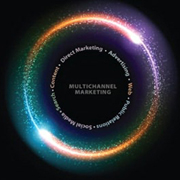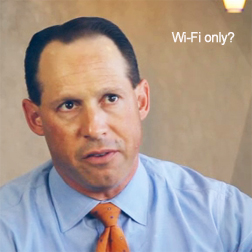The facts speak for themselves. One in four children in the developing world is underweight. One in six people don't have enough food to lead a healthy life. About 25,000 people will die of hunger-related causes today. And that means 18 people will die of hunger by the time you finish reading this post.
There is no question it will happen. There is no question that something can be done about it. The only question is what do we want to do about it? Nothing? Something? Anything? Here's one idea.
From Hunger To Hope Starts October 16.
From midnight (ET) on Oct. 16 to 11:59 p.m. (PT) on
Oct. 17, Yum! brands and several thousand people all over the world will be raising funds for the World Food Programme, which already provides 460 million meals to millions of people. It can provide more too, but they need help.
For $10, 40 more children will receive a meal. For $25, one child in school will be fed for six months. For $100, a child under 2 years of age can receive supplementary food for 18 months. But really, this campaign will benefit the program even more than that because Yum! brands will match $10,000.
You can donate direct via the World Hunger Relief 2012 page developed by Razoo. It makes giving simple, even if you only contribute $10. (Your $10 will become $20 with the matching grant.)
You can do a little bit more than that. Razzo put together a social media/social network kit to help. I'm not going to lie and tell you it's perfect. It's not. You might even feel lost when you visit it.
Having worked on dozens of these global campaigns, including one that was recognized as one of the first social advocacy campaigns on the Web, there is a sequence of steps that can maximize your contribution. Many of them were employed in For Hunger And Hope, a program we developed with Heifer International. That campaign worked, as many Bloggers Unite campaigns did before BlogCatalog had to temporarily move it to the back burner. But that's another story. Let's talk about now.
Six Steps To Help Alleviate World Hunger On Oct. 16.
Step 1: Commit. There isn't any time to waste. Tell people you are committing to the cause today
(Oct. 15) and ask them to join you for From Hunger To Hope (Oct. 16). Share the link. You can also add a Twibbon for Twitter or Facebook, which helps promote this event. (Twibbons are little banners that frame your profile picture, expressing your support of a worthwhile event.)
Step 2: Connect. Join the campaign at Twitter and Facebook. And any time you tweet it, post it, or share it, try to remember to include a hashtag. The official campaign hashtag is #hungertohope and although the campaign says to include it on Twitter, use it on Facebook and Google+ too. Let people know you joined/liked/followed and ask them to do the same.
Step 3: Promote. If you have a blog or any other content creation account (YouTube, etc.), visit the blogger resource page for pictures, logos and facts. The resources will make it easier for you contribute content to the campaign and make connections with other people who care about world hunger. Set your content to be published on or around 8:30-9:30 a.m. (ET) on Oct. 16, which will help kick off the campaign.
Step 4: Donate. Once it runs, please remember to keep your commitment to donate at least $10, which will be matched by Yum! brands. It might not seem like a lot, but if 10,000 people make similar donations than four million meals will be served. That is the power of compounded generosity.
Step 5: Take The Lead. Having worked with nonprofit organizations all over the world throughout my career, I know that giving is a very personal thing for most people. Not everyone likes to tell people they gave a few dollars here or there for fear of looking like they're bragging. While I respect those who prefer to be more anonymous, you are wrong. When people know you are giving to a cause, they are that much more likely to give to the same cause. Talk about your contribution and let it inspire people. If you are still uncomfortable sharing your own contributions, recognize and promote those who do.
Step 6: Track The Results. Stay up to date with the campaign, at least through Oct. 18. Once the tallies are made, let anyone who saw your messages, notifications, posts, or other content know that it really did make a difference. They will appreciate it, but none of them as much as that child who will go to sleep with something in their belly, maybe for the first time.
All six steps might seem like a lot, but they don't have to be. Giving works best when people do what they can within their comfort zone. If all you feel inspired to do is make a small donation, then do that. If you want to do more or simply give kudos to others who step up, then that works too. It all counts.
While I am not part of the campaign team and merely a contributor, it reminds me how many great causes there are out there and how much I have missed organizing social media campaigns for causes since promoting Patch Adams. Maybe that will change. We'll have to see what happens in 2013. But for now, I'm thrilled to have found some comfort here and elsewhere. I hope that you will too.
There is no question it will happen. There is no question that something can be done about it. The only question is what do we want to do about it? Nothing? Something? Anything? Here's one idea.
From Hunger To Hope Starts October 16.
From midnight (ET) on Oct. 16 to 11:59 p.m. (PT) on
Oct. 17, Yum! brands and several thousand people all over the world will be raising funds for the World Food Programme, which already provides 460 million meals to millions of people. It can provide more too, but they need help.
For $10, 40 more children will receive a meal. For $25, one child in school will be fed for six months. For $100, a child under 2 years of age can receive supplementary food for 18 months. But really, this campaign will benefit the program even more than that because Yum! brands will match $10,000.
You can donate direct via the World Hunger Relief 2012 page developed by Razoo. It makes giving simple, even if you only contribute $10. (Your $10 will become $20 with the matching grant.)
You can do a little bit more than that. Razzo put together a social media/social network kit to help. I'm not going to lie and tell you it's perfect. It's not. You might even feel lost when you visit it.
Having worked on dozens of these global campaigns, including one that was recognized as one of the first social advocacy campaigns on the Web, there is a sequence of steps that can maximize your contribution. Many of them were employed in For Hunger And Hope, a program we developed with Heifer International. That campaign worked, as many Bloggers Unite campaigns did before BlogCatalog had to temporarily move it to the back burner. But that's another story. Let's talk about now.
Six Steps To Help Alleviate World Hunger On Oct. 16.
Step 1: Commit. There isn't any time to waste. Tell people you are committing to the cause today
(Oct. 15) and ask them to join you for From Hunger To Hope (Oct. 16). Share the link. You can also add a Twibbon for Twitter or Facebook, which helps promote this event. (Twibbons are little banners that frame your profile picture, expressing your support of a worthwhile event.)
Step 2: Connect. Join the campaign at Twitter and Facebook. And any time you tweet it, post it, or share it, try to remember to include a hashtag. The official campaign hashtag is #hungertohope and although the campaign says to include it on Twitter, use it on Facebook and Google+ too. Let people know you joined/liked/followed and ask them to do the same.
Step 3: Promote. If you have a blog or any other content creation account (YouTube, etc.), visit the blogger resource page for pictures, logos and facts. The resources will make it easier for you contribute content to the campaign and make connections with other people who care about world hunger. Set your content to be published on or around 8:30-9:30 a.m. (ET) on Oct. 16, which will help kick off the campaign.
Step 4: Donate. Once it runs, please remember to keep your commitment to donate at least $10, which will be matched by Yum! brands. It might not seem like a lot, but if 10,000 people make similar donations than four million meals will be served. That is the power of compounded generosity.
Step 5: Take The Lead. Having worked with nonprofit organizations all over the world throughout my career, I know that giving is a very personal thing for most people. Not everyone likes to tell people they gave a few dollars here or there for fear of looking like they're bragging. While I respect those who prefer to be more anonymous, you are wrong. When people know you are giving to a cause, they are that much more likely to give to the same cause. Talk about your contribution and let it inspire people. If you are still uncomfortable sharing your own contributions, recognize and promote those who do.
Step 6: Track The Results. Stay up to date with the campaign, at least through Oct. 18. Once the tallies are made, let anyone who saw your messages, notifications, posts, or other content know that it really did make a difference. They will appreciate it, but none of them as much as that child who will go to sleep with something in their belly, maybe for the first time.
All six steps might seem like a lot, but they don't have to be. Giving works best when people do what they can within their comfort zone. If all you feel inspired to do is make a small donation, then do that. If you want to do more or simply give kudos to others who step up, then that works too. It all counts.
While I am not part of the campaign team and merely a contributor, it reminds me how many great causes there are out there and how much I have missed organizing social media campaigns for causes since promoting Patch Adams. Maybe that will change. We'll have to see what happens in 2013. But for now, I'm thrilled to have found some comfort here and elsewhere. I hope that you will too.









































